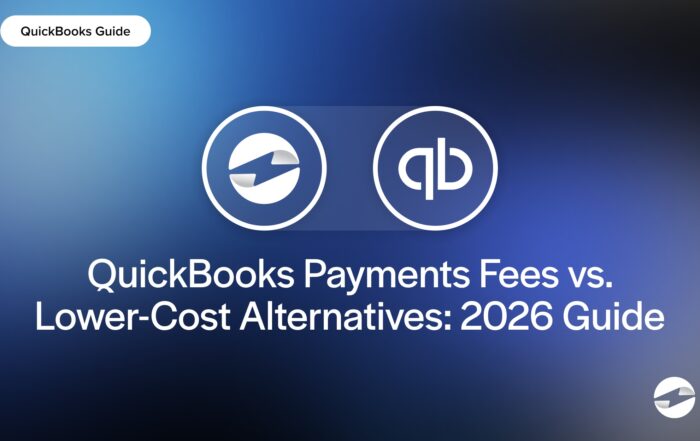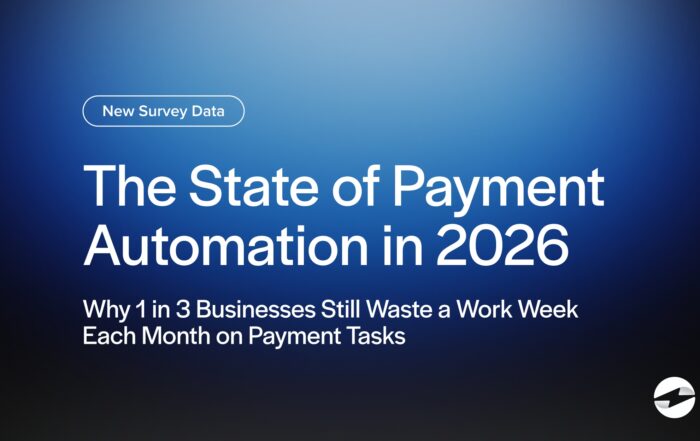What is a virtual terminal?
A virtual terminal is a web-based payment processing tool that allows you to manually enter and process credit card payments without a physical card reader. It’s useful for payments over the phone, by mail, or other card-not-present transactions.
With a virtual terminal, a business that takes customer orders over the phone can log into a secure payment portal, enter the card details, and process the payment instantly. It’s just like a card machine but online. A virtual terminal gives the business the benefits of instant, secure payment processing with no hardware required.
Key Points
- A virtual terminal lets you securely process credit card payments online without a physical card reader.
- It’s for phone, mail, or remote transactions. Popular with service providers, law firms, and freelancers.
- Virtual terminals support multiple payment types, recurring billing, and PCI-compliant security for safer payments.
How does a virtual terminal work?
A virtual terminal works like an online point-of-sale (POS) system without a physical card reader. Here’s how it works:
- Log In – You log into a secure virtual terminal through your payment processor’s website.
- Enter Details – You manually enter the customer’s card number, date, CVV code, and billing information.
- Transaction Is Submitted – The virtual terminal encrypts the payment data and sends it to the payment processor.
- Bank Authorization – The customer’s bank approves or declines the payment based on available funds and fraud checks.
- Payment Confirmation – If approved, the funds are deposited into the merchant’s bank account.
A law firm invoices clients for legal services. Instead of waiting for a mailed check (and also hoping it makes it to the desired destination without getting stolen or lost), they use a virtual terminal to take payments over the phone. The client provides their credit card details, and the firm processes the payment instantly.
Benefits of a virtual terminal
- Accepts payments without a card reader
Unlike traditional in-person POS systems, virtual terminals work online only, which is perfect for businesses that take phone or mail orders. - Remote payment processing
Merchants can accept payments from anywhere with an internet connection, which is ideal for service providers, freelancers and remote businesses. - Multiple payment types
Most virtual terminals allow businesses to process credit cards, debit cards, and even ACH payments, providing more ways for customers to pay. - Improved security with PCI compliance
A good virtual terminal encrypts transactions and helps businesses meet PCI DSS (Payment Card Industry Data Security Standard) requirements, reducing fraud risks. - Easy recurring billing
Many virtual terminals offer stored payment information and recurring billing options, which are perfect for subscription-based services like a marketing agency that bills clients monthly for ongoing services. Instead of manually entering payment details each time, they use their virtual terminal’s recurring feature to charge clients on their due date.
Who uses a virtual terminal?
Virtual Terminals are a common tool for companies that handle card-not-present transactions. The online processor encrypts the card data to help reduce exposure by limiting the amount of sensitive data handled. Some examples of businesses that may use virtual terminals are:
- Medical offices – Process payments for telehealth visits and invoices.
- Law firms & accountants – Take client payments over the phone.
- Home service providers – Accept payments after completing jobs.
- Freelancers & consultants – Bill clients remotely.
- Nonprofits – Take donations by phone.
Virtual terminal vs. payment gateway
| Feature | Virtual Terminal | Payment Gateway |
|---|---|---|
| Purpose | Manually enter payments | Process online transactions |
| Card-Present? | No – used for remote payments | Yes – can be used with eCommerce |
| Ideal for | Phone, mail, or invoice payments | Website and mobile checkout |
| Requires Card Reader? | No | Optional |
| Example Use Case | A doctor’s office accepting a phone payment | An online store processing a customer checkout |
Virtual terminal providers
If you are looking to learn more about setting up a virtual terminal. Here are some top virtual terminal providers to help get you started:
- EBizCharge – A PCI-compliant, feature-rich virtual terminal for B2B and B2C businesses.
- PayPal – Simple virtual terminal with invoice capabilities.
- Stripe – Developer-friendly virtual terminal.
- Square – Ideal for small businesses and service providers.
- Authorize.net – The leader in virtual terminals.
A virtual terminal is a must-have for businesses that take remote payments. Whether you’re a service provider taking phone orders or a freelancer billing clients, a virtual terminal makes transactions easier, more secure, and faster – no card reader is required.
You May Also Like
Read More
QuickBooks Payments Fees vs. Lower-Cost Alternatives: 2026 Guide
Read More
EBizCharge Listed as a 2025 Construction Executive Top Construction Technology Firm
Read More
Read More



